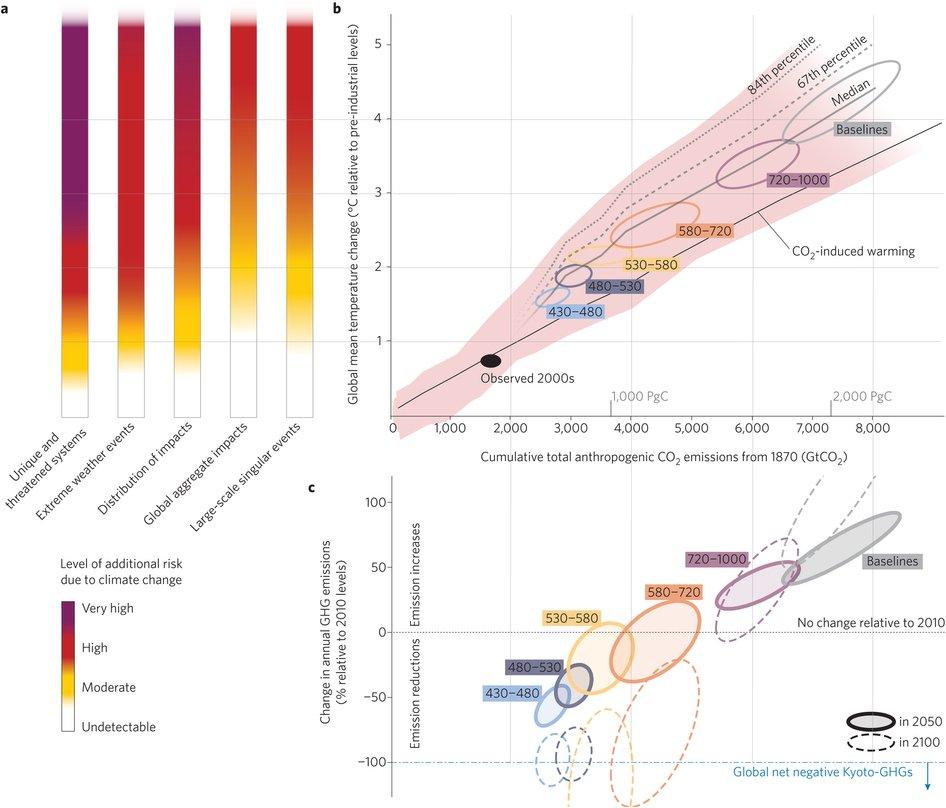Mapping the climate change challenge
Plans and policies to achieve the goal set at the Paris Climate Summit in 2015 have yet to be fully developed and implemented. There is an important role for science to feed political discussions by communicating the costs and benefits of climate policies. One way to do so is through mapping that systematically explores the consequences of different choices. Two articles recently published in Nature Climate Change and Nature discuss how this could be done, the strengths and limitations of such activities, and how decision-makers could use results of such approaches in practice. PBL researcher Detlef van Vuuren contributed to both publications.
The synthesis report of AR5 already made an attempt to systematically integrate information from various disciplines involved in climate research. Part of this multi-disciplinary effort is figure combining key findings of the Working Groups on science, impacts and mitigation The authors of the articles in Nature Climate Change and Nature use the figure to identify research options that may both facilitate the integrated analysis of climate change and help to inform policymakers and the general public.

The Figure provides a comprehensive summary of the current knowledge on climate change.
It shows the possible impacts of climate change, the relationship between cumulative carbon dioxide emissions and global mean temperature change, and the relationship between cumulative carbon dioxide emissions and the 2050 emission reductions that are consistent with the various emission budgets. Policymakers can use the Figure, for instance, to relate the estimated impacts of the 2 oC target to the associated emission reductions by 2050.
Combining several figures into one may demonstrate the impact of different options and the uncertainties involved – thus helping policymakers to decide which options to choose. The challenge for researchers is to summarise results in ways that are true to the original research, explicit about the value of and judgements in the analysis, and digestible by and useful to policymakers and the general public.




